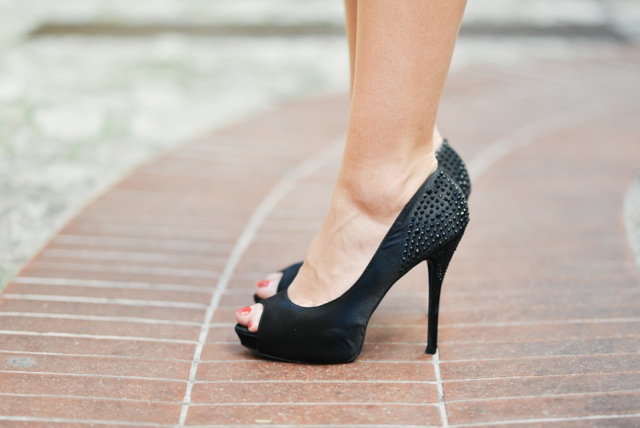“You can’t help getting older, but you don’t have to get old.” -George Burns
I can’t believe anyone wants to be old!
Ingrained in your mind and body are lifestyle behaviors that have been developing over many years, perhaps some thirty years or more, and you believe by now, these factors are beyond your control. This is “Social Clock” stereotyping. Change is frustrating, yet it is achievable and the results are a more fulfilling life. Sometimes the results are slow to feel and slow to see, unlike stepping on a weight scale, because becoming ageless is not like going on a diet. You can cut back on calories and loose weight, but that’s not enough. You can change your hair color, but that’s only scraping the surface. Becoming ageless is a whole mind and body awareness that takes over our existing mind and body behaviors–our daily habits.
Habits are unconscious thoughts and behaviors that are based on previous experiences, a cognitive script that we automatically follow whenever we encounter a particular situation. We don’t even think about them, we do them. Unfortunately our brains do not discriminate between good habits and the bad. This makes it hard to change, but not impossible.
The theory is simple, change is when we become mindful of a negative behavior and replace it with a positive behavior and repeat it often enough until it becomes automatic. In order to change we need to understand this process of change and you need to be ready to make the commitment. For myself, I was willing to make this commitment and made changes over weeks discovering triggers to help me.
Cosmetic surgery is a trigger, but it is not the only way to get this attitude.
Attitude is personality with persona—the whole you. It’s not just your physical body. Attitude is how you walk, how you talk, how you feel about the world, your life, your hopes, your dreams, your passions. Attitude is you oozing with confidence.
And, it’s this “attitude” that makes you ageless.
What does it take to change my “attitude”? Turning fifty sucks. Turning sixty is the pits. No one I know joyfully turns sixty. There is such a huge jump in stereotyping when you turn sixty even if the day before you were fifty-nine. Fifty-nine is O.K. But sixty is old. That last 24 hours has transformed you into a whole new person even though you did nothing to change your current behaviors. People treat you differently. They expect you to be different. You start getting discounts!
What also worried me, even though I was no different of a person, was the fact that I was single and looking for a long-term relationship. I was dating younger men, which seemed “cool” at fifty, but not so “cool” at sixty. This was a strong motivating factor to avoid the big 6-0. The number alone would make me older in the eyes of every man I dated. The number alone has a huge impact when on any Internet dating site. Stereotyping kicks in.
I began to become aware of everything I did that would label me “sixty”. I did not want to unconsciously start acting like what society expected of a sixty year old. Of course the first thing that troubled me was the number–6-0. Just looking at that number created a mind set. I did not feel sixty. I did not look sixty nor did I walk and talk like I was sixty. I needed something to remind myself not to become a “sixty” stereotype. I needed a new number! So I picked one: 5O, if I’m going to do this, why not become 50? Then I panicked and thought I could never do that. So I wrote down the number: 55. That looked reasonable. But, that didn’t seem enough, I needed to push myself, 55 seemed too easy. I could easily pass for 55.
“Go for the gold! Make it happen! Pass on the discounts!” So I crossed out 55 and wrote 50. This physical act was my “trigger”, an intervention–faux placebo.
Dr. Ellen Langer, from Harvard University, used placebos in her research. Most people think of them as a sugar pill, but they can be any intervention believed by the patient to be potent and produces physiological changes. Dr. Langer goes beyond that and thinks they are a huge factor in producing results. I was not familiar with Dr. Langer’s research until just recently, so my stumbling on to this for myself was pure luck.
However, perhaps it’s a personal reaction to the flip side, what psychologists refer to as the “nocebo effect”: society telling me that I have no control over my aging process. I truly don’t believe this; in my head my thoughts were: “I believe you have choices and I’m going to prove you wrong!” Yes, this is more like me.
Dr. Langer is my hero here, again, when she says that in one of her 2010 studies with breast cancer survivors, she found that those who described themselves as “in remission’ were less functional and showed poorer health than the subjects that considered themselves “cured”. When you think you have a chronic disease, “you are acknowledging the adversary is very powerful, ‘chronic’ is understood as uncontrollable—and that’s not something anyone can know.”
Who has the right to say, “At sixty you must act a certain way?”
Now my job was to notice everything around me. What I was doing or saying that made me look, feel or act sixty. I had to stop categorizing and labeling myself. I needed to become aware of negative circumstances and the roles I was playing–mother, business woman, divorcee–that were limiting me and not allowing me to experience new things or see old things in a new light. What I needed was to be a new me, not just a more attractive face which can be done with a talented makeup artist, but a whole makeover, head to toe, inside and out.
For my friends and readers, I made a plan. You only need to be willing to commit ten days of your life, jump in and follow the program from the time you wake up to the time you go to sleep. However, I understand that this can be very difficult for many, but because you have the choice, follow the plan over the days you can fit it into your work schedule or over weekends. In fact, some of the day’s projects might take you longer than the one-day suggested while others might take less. You may have been thinking about making some changes and have already completed one of the day’s assignments, jump ahead to the next or revisit the assignment if you need more time, it will help reinforce the new behavior. Combining assignments, doing more than one in a day is also acceptable as the goal is to get you actively engaged just be “mindful” of what you are doing, the changes you are making and be sure to step back, look and feel the change. This is your reward for the positive behavior. What’s important is to do all the assignments to the fullest you can. Don’t just do them, make them happen, mean business! It’s in that way you will become more mindful of the changes, feel the difference and reach your ageless self more quickly. Although, the immersion and timing is up to you, setting a calendar “end” date, and this is important, will make you see results immediately and feel younger sooner.
If you want to become ageless, and it is within everyone’s reach, you have to “hit bottom”, be unhappy enough to stop making excuses. YOU HAVE TO WANT IT. We all want to be youthful; the idea of growing old naturally is for those who don’t love themselves enough or just don’t care–which I believe to be an underlining form of unhappiness and even depression. There is an element of risk and perhaps the fear of failure in the back of our mind. No matter what fear or lack of enthusiasm you might have at the start, once you feel the health benefits, it’s worth the effort. Perhaps looking at death, like Joan Rivers did in writing her funeral arrangements, is the trigger to becoming more mindful and to wanting to live to the fullest. Or perhaps it’s just to prove a point to a family member, a friend or to prove to yourself you can do it.
We are fighting the “social clock” which is the stereotyping that society has placed on us, a culture of expectations. I can’t believe anyone wants to be old! In making a change, psychologists say we need to identify just what needs to be changed—in this case, they are the current behaviors that we have fallen into with “social clock” stereotyping. The behaviors that stereotype us “old”, is what we want to change.
The good news is that the latest studies in neuroscience tell us that although changing a behavior is hard, these wired patterns of behavior can be created into new behaviors and once ingrained can become new behaviors of everyday habits. The secret is in not giving up. It is through your persistence that you will succeed. Becoming ageless is hard. But, I felt “I” was worth it and so are “you”!
Change is a process. Understanding how change works will keep you from feeling defeated adding to frustration and giving up. What often happens is that we do well for a week or two and then fall back into negative behaviors, which makes it easy to slip back to old ways. You won’t be perfect. Everyone slips up, but it’s no reason for giving up. Real positive behavioral change takes repeated performance. And like any successful theater performance it needs practice. There will be times we will forget the line or feel uncomfortable. So we try again and each time we get better at it. The stage becomes real. The more practice, the easier you are able to act without thinking. It becomes a part of you. It becomes second nature. It becomes automatic. The words come out without thinking. The habit is now changed.
Studies tells us that real long-term change, with persistence, can take anywhere from 18 to 254 days. It’s better to be more realistic considering the changes you are making have developed over decades, it will take several months for your new self to be unconsciously thinking, actively doing and are automatically engaged in mindful positive behaviors; that is, being ageless. I have met women that have been doing some of these ageless behaviors in some ways already, not even realizing that they can do more. They have unconsciously been feeling the stereotyping and have been resisting it, not fully incorporating mindfulness as much as they would like. They might need a “trigger” like these assignments to make it happen.
Because it takes time to change our cognitive script, if you can commit to a ten- day “cold turkey” makeover, kind of like speed dating, you will be weeks ahead. It’s that intense immersion programing that gets you motivated and into the new lifestyle giving you an immediate taste of the new life which motivates you into becoming more engaged in the positive behaviors. It’s a cycle that keeps going until it becomes automatic within us. We no longer even think about it. It becomes a pleasurable experience, a healthier body and a more youthful mindset.
For those who are involved in a career or have obligations and cannot give up ten days, this is not a problem as long as you set up the time needed to do the ten assignments. Some can be done together in the evening or over weekends. The best results will come if you are consistently working on them and of course incorporate them into your daily life. And some assignments may already be part of your positive behaviors, like you might be in a jazz exercise or yoga class now. You do not need to have all ten assignments done to start being ageless. Do them as close together as possible, some will take longer, but it should all balance out in the end.
For many, self-discipline and self-motivation are strong in the beginning then fade to a slower pace. That may work for you as long as you continue being persistent. But with becoming ageless, it’s not dealing with just one or two goals as in a weight loss diet where you are watching your foods and doing exercise.
Changing your “social clock” is reprograming many goals, a mind and body lifestyle, which starts the moment you wake up in the morning and stays with you until you fall asleep at night.
You have the choice to become ageless.



